Address
304 North Cardinal
St. Dorchester Center, MA 02124
Work Hours
Monday to Friday: 7AM - 7PM
Weekend: 10AM - 5PM
Address
304 North Cardinal
St. Dorchester Center, MA 02124
Work Hours
Monday to Friday: 7AM - 7PM
Weekend: 10AM - 5PM
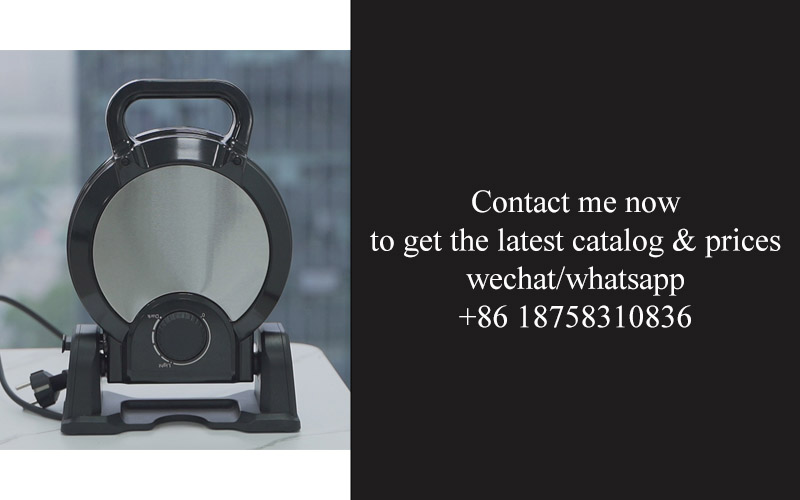
In a world where innovation meets functionality, the ODM (Original Design Manufacturer) juicer design service has emerged as a pivotal force in the kitchen appliance industry. This unique service not only caters to the ever-evolving consumer needs but also drives the market forward with fresh, innovative designs. Let’s delve into the intricate details of this transformative service and explore how it’s reshaping the landscape of juicers.
The evolution of ODM (Original Design Manufacturing) juicer design service has been nothing short of revolutionary in the kitchen appliance industry. From the humble beginnings of simple citrus squeezers to the sleek, multifunctional machines we see today, the journey has been marked by continuous innovation and consumer-centric design.
Once upon a time, juicers were basic tools that simply extracted juice from fruits and vegetables. They were often large, bulky, and not particularly stylish. However, as the market matured and consumer demands grew, the landscape began to change. Enter ODM juicer design service, which has been at the forefront of this transformation.
ODM juicer design service has become a pivotal player in the industry, offering a unique blend of expertise and creativity. These specialized firms work closely with brands to develop custom designs that not only meet the technical requirements but also resonate with the aesthetic preferences of the target market. The process is a delicate balance of functionality, form, and user experience.
In the early days, the focus was primarily on efficiency and durability. Today, however, the design considerations are far more nuanced. ODM juicer design service now includes elements like ease of use, ergonomic handling, and even smart technology integration. These advancements have turned the juicer from a mere kitchen tool into a statement piece.
One of the key aspects of ODM juicer design service is the ability to push the boundaries of innovation. Designers are constantly experimenting with materials, shapes, and features to create juicers that stand out from the competition. From eco-friendly materials to high-tech features like automatic cleaning cycles, the possibilities are endless.
The market for juicers has also seen a shift towards customization. Consumers no longer want a one-size-fits-all product; they seek juicers that reflect their personal style and preferences. ODM juicer design service has embraced this trend by offering a range of designs that cater to different tastes and lifestyles. Whether it’s a minimalist design for a modern kitchen or a vintage-inspired juicer for a classic home, the options are vast.
Moreover, ODM juicer design service plays a crucial role in keeping pace with industry trends. With the rise of health consciousness and the growing popularity of smoothies and fresh juices, there’s been a surge in demand for juicers that can handle a variety of ingredients and produce the highest quality juice. Designers are now incorporating features like variable speed settings and specialized blades to cater to these needs.
Another significant aspect of ODM juicer design service is the use of data and analytics to inform design decisions. By analyzing consumer behavior, market trends, and even the feedback from early adopters, designers can create juicers that not only look good but also perform exceptionally well. This data-driven approach ensures that every aspect of the juicer is optimized for the end-user.
Collaboration is also a cornerstone of ODM juicer design service. Brands and design firms work hand-in-hand to bring new concepts to life. This partnership often results in products that are not just visually appealing but also highly functional. The design process involves multiple iterations, testing, and refinement to ensure that the final product meets the highest standards.
As the kitchen appliance industry continues to evolve, ODM juicer design service remains a driving force behind the innovation and evolution of juicers. It’s not just about creating a new product; it’s about understanding the consumer’s needs and desires, and then translating those into a tangible design that will be a cherished part of the home.
In conclusion, the evolution of ODM juicer design service has truly been a game-changer for the kitchen appliance industry. By focusing on innovation, customization, market trends, and data-driven design, these services have elevated the juicer from a simple tool to a must-have kitchen gadget. The future looks bright for ODM juicer design service, as it continues to shape the landscape of kitchen appliances and enhance the culinary experiences of consumers around the world.

ODM, or Original Design Manufacturing, has become a pivotal concept in the kitchen appliance industry, reshaping how products are developed and brought to market. This approach involves a manufacturer creating products based on specifications provided by a client, rather than producing generic items that can be sold under various brand names. Let’s delve into the nuances of ODM in this sector.
The foundation of ODM lies in collaboration. Clients, often brand owners or retailers, provide detailed requirements and design preferences, which manufacturers then translate into tangible products. This process fosters a strong partnership, as both parties are invested in the outcome, ensuring that the final product aligns with the client’s vision and market demands.
Customization is at the heart of ODM. It allows clients to specify everything from the materials used to the aesthetic details, ensuring that the final product not only meets functional needs but also stands out in a crowded market. This level of personalization is particularly valuable in the kitchen appliance industry, where consumers are increasingly looking for products that reflect their personal style and preferences.
Innovation is a driving force behind ODM. Manufacturers often invest in research and development to create unique features and functionalities that set their clients’ products apart. This can include everything from advanced juicing technologies to sleek, modern designs, all tailored to the client’s brand identity and target audience.
Quality control is paramount in the ODM process. Since the manufacturer is producing goods specifically for a client, there is a heightened focus on ensuring that every aspect of the product meets the highest standards. This includes rigorous testing at various stages of production to guarantee that the final product is reliable, durable, and safe for consumers.
Supply chain management plays a crucial role in ODM. The manufacturer must be adept at managing the entire supply chain, from sourcing raw materials to coordinating with suppliers and logistics providers. This ensures that the production process runs smoothly and that the client receives their product on time, without any disruptions.
Cost efficiency is another key aspect of ODM. While the initial investment in design and development may be higher, the long-term benefits can be substantial. By streamlining the production process and eliminating the need for multiple suppliers, ODM can help reduce costs for the client. This, in turn, can lead to competitive pricing for the end consumer.
The flexibility of ODM is undeniable. Clients can request modifications or enhancements to their products at any stage of the development process. This agility is particularly useful in the fast-paced kitchen appliance industry, where trends can change rapidly. ODM allows manufacturers to adapt quickly, ensuring that clients can keep their offerings fresh and appealing to consumers.
Intellectual property protection is a critical concern in ODM. Since the products are custom-designed, there is a need to ensure that the intellectual property rights are safeguarded. This involves thorough documentation of the design process and the establishment of clear agreements between the client and the manufacturer.
The global reach of ODM is extensive. Manufacturers can work with clients from all over the world, leveraging their expertise to create products that cater to diverse markets. This international collaboration can lead to innovative designs that are both culturally relevant and globally appealing.
In the realm of sustainability, ODM offers a unique advantage. Clients can specify environmentally friendly materials and manufacturing processes, ensuring that their products are not only innovative but also responsible. This aligns with the growing consumer demand for sustainable and eco-friendly kitchen appliances.
Lastly, ODM fosters a culture of continuous improvement. By working closely with clients, manufacturers gain valuable insights into consumer needs and market trends. This feedback loop enables both parties to evolve and refine their offerings over time, ensuring that the products remain competitive and relevant.
In summary, ODM in the kitchen appliance industry is a sophisticated and dynamic process that combines customization, innovation, and strategic partnerships. It allows clients to bring their unique visions to life, while manufacturers can leverage their expertise to create cutting-edge products that resonate with consumers worldwide.
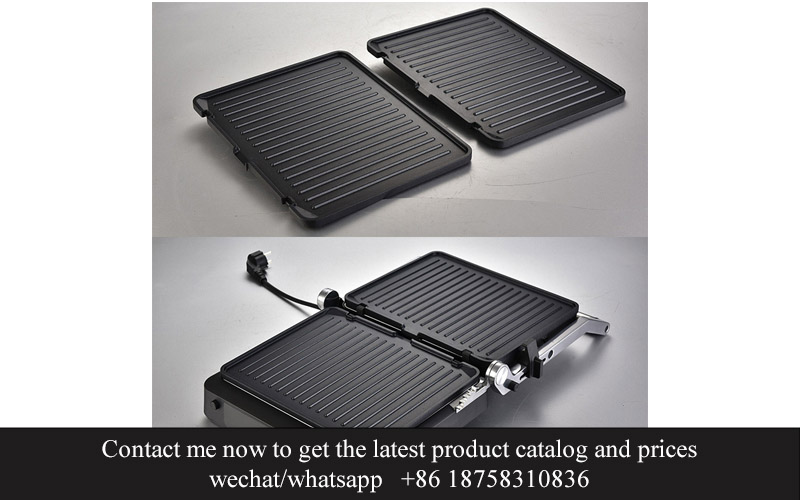
The ODM (Original Design Manufacturer) juicer design service has emerged as a transformative force within the kitchen appliance industry, offering a suite of unique benefits that resonate with both manufacturers and consumers alike. Here’s a closer look at what sets this service apart:
Innovation at the CoreOne of the most significant advantages of ODM juicer design service is the emphasis on innovation. Designers work closely with clients to conceptualize and develop juicers that push the boundaries of traditional designs, resulting in products that are not only functional but also aesthetically pleasing and technologically advanced.
Tailored SolutionsEach client’s needs are unique, and ODM services excel at providing customized solutions. Whether it’s a compact juicer for a health-conscious consumer or a high-powered model for commercial use, ODM ensures that the design reflects the specific requirements and brand identity of the client.
Cost-Effective DesignODM design services often lead to cost savings for manufacturers. By streamlining the design process and avoiding the need to invest in in-house design teams, companies can reduce overheads while maintaining high-quality standards. This cost-effectiveness is passed on to the consumer, making premium juicers more accessible.
Rapid PrototypingThe ability to rapidly prototype designs is another key benefit of ODM juicer design service. This agility allows for quick iterations and improvements, ensuring that the final product is refined and ready for market in a timely manner.
Quality ControlWhen a manufacturer outsources the design of its juicers to an ODM, they gain access to a team that is dedicated to quality control. From material selection to assembly processes, the ODM ensures that every aspect of the juicer is rigorously tested to meet industry standards.
Market Trends AnalysisODM service providers are often at the forefront of market trends, offering insights that can help manufacturers stay ahead of the curve. By incorporating the latest design trends and consumer preferences, ODMs help their clients create products that resonate with today’s market demands.
Sustainability FocusIn recent years, sustainability has become a major concern for consumers and businesses alike. ODM juicer design services can incorporate eco-friendly materials and energy-efficient technologies, making the final product not only environmentally responsible but also a responsible choice for the consumer.
ScalabilityAs a company grows, so does its need for product variety. ODM services can easily scale up to accommodate the creation of multiple models or lines of juicers, ensuring that a brand can expand its offerings without overextending its resources.
Intellectual Property ProtectionWhen a company relies on ODM for design services, it often gains additional protection for its intellectual property. Designers are typically required to sign non-disclosure agreements, safeguarding the uniqueness of the product design and ensuring that it remains a competitive asset.
Brand EnhancementA well-designed juicer can significantly enhance a brand’s image. ODM services focus on creating designs that are not only functional but also reflect the brand’s values and image, helping to build consumer trust and loyalty.
Flexibility in Materials and FeaturesODM services offer flexibility in choosing materials and incorporating features that might not be available in standard juicer designs. This can lead to products that are more durable, easier to maintain, or simply more user-friendly.
In conclusion, the unique benefits of ODM juicer design service extend far beyond just creating a new product. It encompasses a holistic approach to design that addresses innovation, customization, cost efficiency, and market trends, all while upholding the highest standards of quality and sustainability.
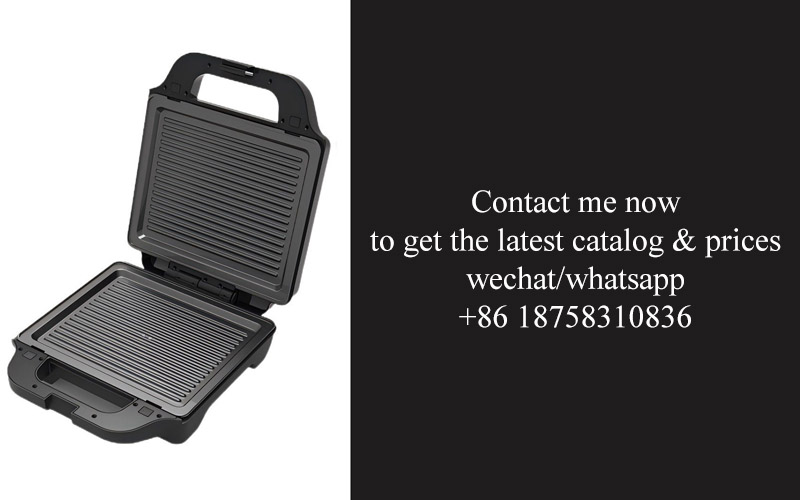
In the ever-evolving world of kitchen appliances, juicers have become a staple in many homes. However, the design of these devices has seen a remarkable transformation, driven by innovative ideas and a focus on style. Here are some fresh concepts that are reshaping the juicer design landscape.
The sleek and minimalist aesthetic has become a hallmark of modern juicers. Designers are now focusing on creating appliances that blend seamlessly into the kitchen environment, with clean lines and a lack of unnecessary embellishments. This approach not only enhances the visual appeal but also makes the juicer a functional piece of art that can be proudly displayed on the countertop.
One of the newest trends in juicer design is the integration of smart technology. Modern juicers are not just about extracting juice; they are equipped with features that make the process more efficient and enjoyable. Think of touchscreens that allow for easy selection of juice recipes, or intuitive controls that adjust the juicing speed based on the type of produce being used. This technological integration not only simplifies the juicing experience but also adds a touch of sophistication to the appliance.
Functionality has always been a key aspect of juicer design, but the latest iterations are pushing the boundaries even further. We’re seeing juicers with innovative features like self-cleaning systems, which reduce the hassle of post-juicing cleanup. Some models even come with built-in storage containers for fresh juice, ensuring that the liquid gold stays fresh until it’s time to drink. These thoughtful additions make juicing not just a healthier choice but also a more convenient one.
The materials used in juicer design are also undergoing a revolution. No longer are plastic and metal the only options; now, we’re seeing juicers crafted from sustainable materials like bamboo and recycled plastics. These eco-friendly choices not only appeal to environmentally conscious consumers but also offer a unique aesthetic that sets them apart from traditional juicers.
Color and texture play a significant role in the appeal of a juicer. Designers are experimenting with vibrant hues and textures to make the appliance stand out. From pastel shades that add a playful touch to the kitchen to bold, metallic finishes that exude a sense of luxury, the color palette of juicers has expanded to cater to a wide range of tastes and interior styles.
Interactive elements are becoming more common in juicer design. Some juicers now come with LED displays that provide real-time feedback on the juicing process, such as the amount of juice extracted or the remaining time. This not only adds a tech-savvy vibe to the appliance but also educates users about their juicing habits, encouraging them to make healthier choices.
The ergonomics of juicers have also been reimagined. Modern designs feature comfortable handles, non-slip bases, and compact footprints that make the appliance easy to maneuver and store. These thoughtful design choices ensure that the juicer is not just a stylish addition to the kitchen but also a practical one.
In the realm of juicer design, there’s a growing emphasis on customization. Some brands are offering modular designs where users can swap out parts to create a juicer that fits their specific needs. This could mean changing the juicing head for different types of produce or adding attachments for making smoothies or nut milks. Customization allows consumers to have a juicer that is as unique as their personal style.
Lastly, the concept of connectivity is making its way into juicer design. Imagine a juicer that can be controlled via a smartphone app, allowing users to program their juicing sessions or even start the process remotely. This integration of smart home technology is not just a convenience; it’s a testament to how far juicer design has come and where it’s heading.
Innovating with style in juicer design is about more than just making a pretty appliance; it’s about enhancing the user experience, making healthy living more accessible, and staying ahead of the curve in the world of kitchen appliances. With these fresh ideas, the juicer is not just a tool but a statement piece, a reflection of the homeowner’s lifestyle and values.
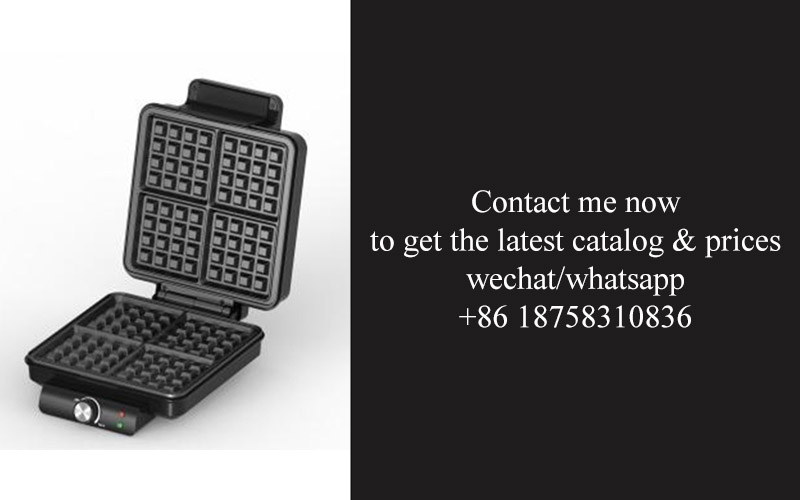
The kitchen appliance industry is a dynamic sector, always evolving with new innovations and consumer preferences. To stay ahead, companies must keep a keen eye on market insights and industry trends. Here’s a glimpse into some key observations shaping the market:
Consumer Health Consciousness on the RiseOne significant trend is the increasing health awareness among consumers. As the demand for fresh, natural, and organic foods grows, juicers have become a staple in many homes. This shift has prompted appliance manufacturers to focus on designs that not only extract juice efficiently but also enhance the nutritional value of the final product.
Smart Technology IntegrationSmart appliances are becoming more common in kitchens. Juicers with built-in smart technology, such as those that can be controlled via an app or connected to a home automation system, are gaining traction. This integration allows users to monitor and adjust their juicer settings remotely, adding convenience and personalization to the juicing experience.
Sustainability and Eco-Friendly DesignsThe environmental impact of consumer goods is a hot topic. Companies are responding by designing juicers that are more sustainable and eco-friendly. This includes using recycled materials, reducing packaging waste, and creating energy-efficient machines that consume less power.
Aesthetic Appeal MattersGone are the days when juicers were just functional appliances. Today, consumers look for stylish designs that complement their kitchen decor. Modern juicers are sleek, with a variety of color options and innovative shapes that can serve as a statement piece in the kitchen.
Personalization and CustomizationTailoring products to individual needs is another key trend. Customizable juicers with adjustable settings for juice type and speed are becoming popular. This allows users to extract juice with the exact consistency they prefer, whether it’s a smoothie or a shot of concentrated juice.
Healthy Lifestyle InfluencersInfluencers and health bloggers play a crucial role in shaping the market. Their endorsements and recommendations can significantly impact consumer preferences. Companies are now actively seeking partnerships with these influencers to gain credibility and reach a broader audience.
Miniaturization and PortabilityThere’s a growing trend towards smaller, more portable juicers. These compact models are perfect for those with limited kitchen space or for individuals who are always on the go. The convenience of portability makes these juicers a favorite among travelers and small-space dwellers.
Eco-Friendly Cleaning SolutionsCleaning is an essential part of juicing, and the industry is responding with eco-friendly cleaning solutions. Some juicers come with brushes made from sustainable materials, and others have self-cleaning features that reduce the need for harsh chemicals.
Innovative Material UsesAppliance manufacturers are exploring new materials that are durable, easy to clean, and visually appealing. Materials like stainless steel, BPA-free plastics, and high-quality ceramics are becoming more prevalent, offering consumers a range of options that suit different tastes and budgets.
Globalization of TrendsTrends in the juicer market are not confined to any single region. Innovations and designs from one country can quickly spread globally. This interconnectedness means that companies must stay informed about what’s happening in different markets to remain competitive.
Interactive and Educational FeaturesSome juicers are now equipped with interactive features that educate users about the benefits of juicing and provide nutritional information. These educational tools help to further promote the health benefits of fresh juice and can encourage users to incorporate juicing into their daily routines.
In conclusion, staying abreast of market insights and industry trends is vital for any company in the kitchen appliance industry, especially for those specializing in juicers. The evolving consumer landscape is driving a wave of innovation that prioritizes health, sustainability, convenience, and personalization. Companies that adapt to these trends will undoubtedly find success in the competitive world of juicing appliances.
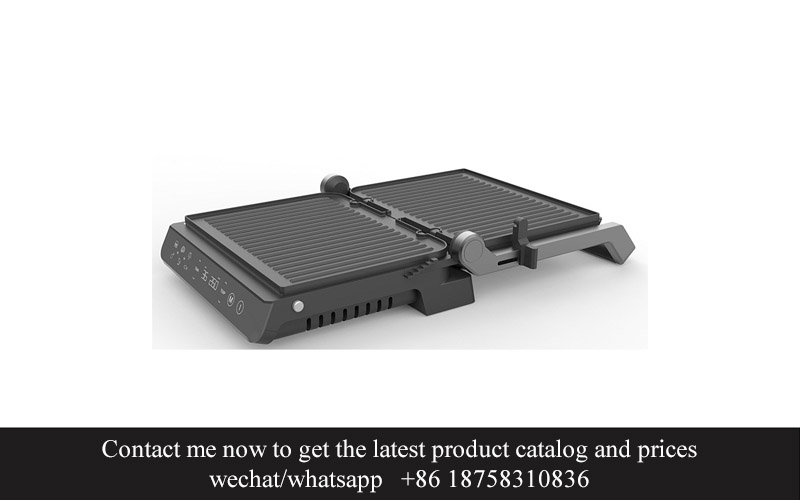
In the ever-evolving landscape of kitchen appliance design, the shift towards data-driven approaches has become a cornerstone of innovation. This strategic approach ensures that every design decision is backed by concrete data, rather than mere intuition or guesswork. Let’s delve into how analytics is revolutionizing the design process.
Consumer behavior patterns are continuously evolving, and staying ahead of these shifts is crucial for manufacturers looking to create successful juicer designs. Analytics provides a window into these patterns, offering insights into what consumers truly desire. For instance, by analyzing sales data, companies can identify which features are most popular and tailor their designs accordingly.
The integration of smart technology in juicers has surged, and analytics plays a pivotal role in understanding this trend. By examining usage data from connected devices, designers can uncover how users interact with their appliances, leading to intuitive interfaces and more user-friendly designs. For example, if a high percentage of users find a certain feature cumbersome, analytics can guide the design team to simplify the interface.
Analytics also helps in predicting future trends. By analyzing historical sales data and consumer feedback, designers can anticipate upcoming trends and incorporate them into their juicer designs proactively. This forward-thinking approach ensures that the juicers hitting the market are not only innovative but also aligned with what consumers will want in the near future.
Color preferences, design aesthetics, and branding are all influenced by a variety of factors. Analytics can sift through these variables to identify which design elements resonate most with consumers. For instance, a study might reveal that certain color schemes have higher appeal in specific regions or demographics, leading designers to create region-specific versions of the same juicer.
User satisfaction is a key indicator of product success. Analytics can quantify this satisfaction by analyzing customer feedback and reviews. By tracking common complaints and accolades, designers can pinpoint areas for improvement or areas where they’ve hit the mark. This feedback loop ensures that each iteration of the juicer design is refined to enhance the user experience.
Innovation is not just about adding new features; it’s also about understanding how those features are used. Analytics can track usage frequency and intensity, revealing which features are overhyped and which are genuinely valuable to consumers. This knowledge allows designers to focus on the most impactful innovations, making each juicer a more effective and user-friendly appliance.
Designing for sustainability has become increasingly important, and analytics can provide insights into how consumers perceive and respond to eco-friendly features. By analyzing consumer preferences and purchase behaviors, designers can integrate sustainable materials and energy-efficient designs into their juicer products, aligning with the growing market demand for environmentally conscious appliances.
The competitive landscape of the kitchen appliance industry is intense, and analytics can offer a competitive edge. By analyzing market data, designers can understand how their competitors are positioning their products and identify gaps in the market that can be filled with unique juicer designs. This competitive intelligence is invaluable for differentiating a brand and attracting discerning consumers.
Lastly, analytics can streamline the design process itself. By automating certain aspects of the design process, such as material selection and form factor optimization, designers can focus on the creative aspects of their work. This efficiency not only shortens the time to market but also ensures that each design is based on a strong foundation of data-driven insights.
In summary, leveraging analytics in the design process is more than just a trend; it’s a strategic necessity. It allows for the creation of juicers that not only meet current consumer needs but also anticipate future desires. By turning data into actionable design decisions, manufacturers can stay ahead of the curve and deliver products that stand out in an increasingly crowded market.

In the competitive world of kitchen appliances, the ability to cater to individual consumer needs has become a cornerstone of success. Customization isn’t just a trend; it’s a strategic move that can set a brand apart. Here’s how juicer manufacturers are mastering the art of tailoring their products to consumer desires:
The Power of PersonalizationConsumers today are more discerning than ever. They seek not just functionality but also a product that reflects their personal style and lifestyle. Customization allows juicers to become more than just a kitchen gadget; they become an extension of the user’s identity.
Understanding the Consumer JourneyBrands that excel in customization start by understanding the consumer journey. This involves delving into market research to uncover patterns and preferences. By analyzing buying habits, brand loyalty, and feedback, manufacturers can identify what consumers truly want in a juicer.
Functionality Meets AestheticsOnce the needs are pinpointed, the challenge lies in creating juicers that not only perform well but also look stunning. The design must balance practicality with visual appeal, ensuring that the juicer complements the kitchen’s aesthetic while being user-friendly.
Diverse Features for Varied LifestylesDifferent consumers have different lifestyles. Some may prioritize portability, while others may value quiet operation or a wide range of juicing capabilities. Customization allows for a variety of features to be integrated into a single product, making it versatile enough to appeal to a broad market.
Interactive Design and TechnologyModern consumers are drawn to interactive and technology-driven appliances. Juicers that offer digital displays, smart connectivity, and programmable settings are becoming more popular. Customizing these aspects ensures that the juicer not only meets but exceeds consumer expectations.
Quality Materials for LongevityA key component of customization is the use of high-quality materials. Consumers today are looking for durable and long-lasting products. By offering customization that includes the option for premium materials, manufacturers can offer a sense of luxury and reliability.
Sustainability and Eco-Friendly OptionsWith growing environmental concerns, consumers are increasingly seeking sustainable and eco-friendly appliances. Customization can include sustainable materials and energy-efficient designs, making the juicer not only a stylish addition but also a responsible choice.
Flexible Production LinesTo truly tailor juicers to consumer needs, manufacturers must have flexible production lines. This means the ability to quickly adapt to changes in design, features, or materials based on market feedback. The more agile a company is, the better it can cater to emerging trends and customer demands.
Customization as a DifferentiatorIn a crowded market, customization can be a powerful differentiator. By offering a unique product that can’t be found elsewhere, manufacturers can create a niche for their brand. This can lead to increased brand loyalty and a competitive edge over competitors who offer generic products.
Feedback Loops for Continuous ImprovementSuccessful customization involves establishing feedback loops. Brands should actively seek out customer reviews and testimonials to understand what works and what doesn’t. This continuous improvement process ensures that the juicers remain relevant and meet the evolving needs of consumers.
In conclusion, customization is not just about offering a range of options; it’s about creating a connection between the consumer and the product. By understanding consumer needs, integrating cutting-edge technology, and focusing on quality and sustainability, juicer manufacturers can create products that not only perform well but also resonate emotionally with their users.

In the competitive landscape of kitchen appliances, Original Design Manufacturer (ODM) services play a pivotal role in brand differentiation. By crafting unique and innovative designs, ODMs help manufacturers stand out in a crowded market. Here’s how ODMs contribute to this crucial aspect of brand identity:
Designing for Emotion and ExperienceBrands that collaborate with ODMs often aim to evoke a specific emotional response or create a unique experience for their customers. ODMs understand that a juicer, while a functional appliance, can also be a statement piece in a kitchen. Through thoughtful design, they infuse personality and style into every product, ensuring that it resonates with the brand’s ethos and the target consumer’s aspirations.
Crafting a Story Through DesignEvery product tells a story, and ODMs are adept at weaving narratives into the design of juicers. By incorporating elements that reflect the brand’s history, values, or mission, ODMs help to create a deeper connection between the consumer and the product. This storytelling aspect of design can set a brand apart, making it more memorable and relatable.
Function Meets FormAn ODM’s expertise lies in balancing functionality with aesthetics. They understand that a juicer must not only look good but also perform efficiently. By focusing on the ergonomics, ease of use, and user experience, ODMs ensure that the design of the juicer not only attracts attention but also provides a seamless and enjoyable experience for the user.
Adapting to Market DemandsThe kitchen appliance industry is dynamic, with consumer preferences shifting rapidly. ODMs stay on top of these changes, adapting their designs to meet new market demands. Whether it’s a trend towards healthier living, sustainability, or smart technology integration, ODMs can tailor the design of juicers to align with these evolving needs.
Incorporating Technology and InnovationODMs are at the forefront of technological advancements, integrating cutting-edge features into juicer designs. From high-speed motors to advanced filtration systems, these innovations not only enhance performance but also elevate the brand’s image as a leader in kitchen appliance technology.
Sustainability and Eco-Friendly DesignsWith environmental concerns on the rise, ODMs are increasingly focusing on sustainability. They design juicers that are not only energy-efficient but also made from eco-friendly materials. This commitment to sustainability can be a significant differentiator for brands looking to appeal to eco-conscious consumers.
Global Aesthetic SensibilitiesODMs often work with a global perspective, understanding that design aesthetics can vary greatly across different regions. They create designs that are not only appealing in one market but can resonate with consumers worldwide. This global approach ensures that brands can expand their reach and appeal to diverse audiences.
Personalization and CustomizationCustomization is a powerful tool for brand differentiation. ODMs offer tailored design services that allow manufacturers to create juicers that reflect their brand’s unique identity. From color schemes to unique features, this level of personalization can make a brand’s product stand out on the shelves.
Protecting Intellectual PropertyODMs also play a crucial role in protecting a brand’s intellectual property. By developing proprietary designs, they help manufacturers avoid generic looks and ensure that their products are distinct. This exclusivity can be a significant competitive advantage in the marketplace.
In conclusion, the role of ODMs in brand differentiation is multifaceted. From crafting emotional connections and telling brand stories to integrating technology and sustainability, ODMs are instrumental in helping manufacturers create products that not only perform well but also leave a lasting impression on consumers. By investing in ODM services, brands can ensure that their juicers are not just appliances but extensions of their brand identity, setting them apart in a competitive market.
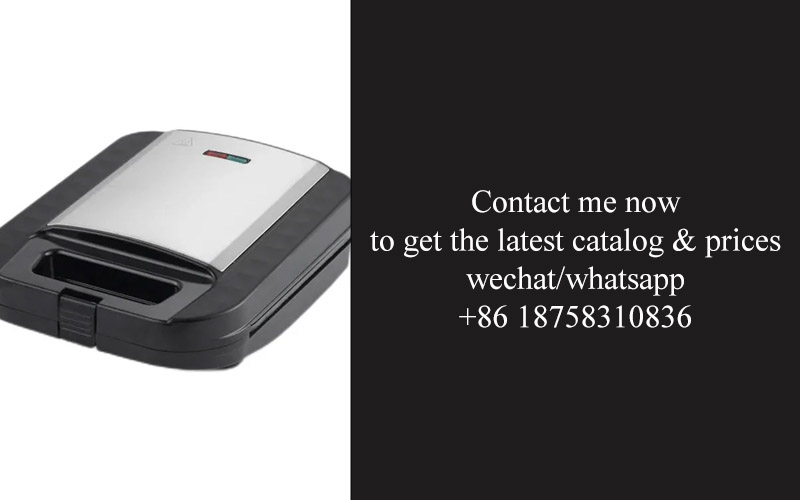
In the world of kitchen appliances, Original Design Manufacturing (ODM) has emerged as a crucial strategy for brands looking to stand out in a crowded market. Case studies of successful ODM juicer designs showcase how this approach can transform a product from generic to groundbreaking. Let’s delve into a few notable examples.
The sleek, minimalist design of the Eco-Fresh juicer by GreenGuru is a testament to the power of ODM. The team at GreenGuru collaborated closely with their ODM partner to create a juicer that not only looks stunning but also functions with unparalleled efficiency. The case study highlights how the ODM process allowed for a custom design that catered to eco-conscious consumers, who appreciate the juicer’s BPA-free materials and energy-saving features.
Another compelling example is the SmartSqueeze juicer by TechNest. This case study reveals how ODM helped TechNest to integrate cutting-edge technology into a juicer that appeals to tech-savvy consumers. The juicer boasts a smart touch screen interface, allowing users to monitor their juice consumption and even connect to their fitness apps. The ODM process was key in developing the juicer’s sleek, modern design and ensuring that the technology was seamlessly integrated without compromising on performance.
The HealthHive juicer by Vitality Brands is another case that stands out. This case study tells the story of how ODM allowed Vitality Brands to create a juicer that not only looks stylish but also addresses specific health concerns. The HealthHive juicer features a unique, compact design that fits perfectly on kitchen countertops, and it comes with a range of attachments for making smoothies, nut butters, and even baby food. The ODM process enabled Vitality Brands to bring this innovative concept to life, ensuring that the juicer’s design and functionality were perfectly aligned with the brand’s health-focused mission.
The case study of the RetroRevive juicer by VintageVibes is a perfect example of how ODM can breathe new life into a classic concept. By partnering with an ODM firm, VintageVibes was able to design a juicer that pays homage to the golden era of juicers while incorporating modern features. The RetroRevive juicer is a hit with consumers who appreciate its nostalgic aesthetic, but also value its high-performance motor and ease of use. This case study demonstrates how ODM can help a brand tap into nostalgia while still offering a contemporary product.
The ZenBliss juicer by TranquilTech is a prime example of how ODM can cater to niche markets. This case study shows how TranquilTech used ODM to create a juicer that targets consumers looking for a stress-free, meditative experience while making juice. The ZenBliss juicer is designed with a calming color palette and features a silent motor that operates at a whisper. The ODM process allowed TranquilTech to focus on the user experience, ensuring that the juicer’s design and performance were tailored to the needs of its target audience.
The case study of the UrbanEdge juicer by CityLife Appliances is a fascinating look at how ODM can help a brand adapt to urban living. This juicer is designed to be compact and portable, making it ideal for city dwellers with limited kitchen space. The UrbanEdge juicer also boasts a modular design that allows users to swap out parts for different functions, such as blending or making sorbets. This case study highlights how ODM can enable a brand to respond to the evolving needs of consumers in urban environments.
In conclusion, the case studies of successful ODM juicer designs provide valuable insights into the power of this approach. From eco-conscious consumers to tech enthusiasts, and from health-focused individuals to those who appreciate nostalgia, ODM has proven to be a versatile tool for brands looking to create products that resonate with their target markets. By leveraging the expertise of ODM partners, brands can bring fresh, innovative ideas to life, ensuring that their products not only stand out but also deliver exceptional value to consumers.
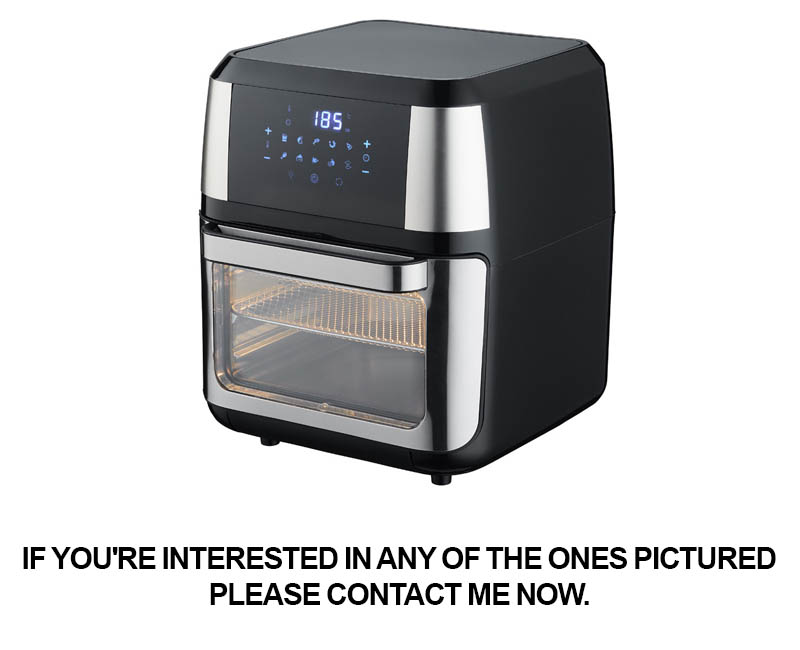
In the ever-evolving landscape of kitchen appliances, the demand for unique and innovative designs has surged. As consumers seek products that not only serve a functional purpose but also reflect their personal style, the role of Original Design Manufacturer (ODM) juicer design services has become increasingly significant. This section delves into the future prospects of ODM juicer design, exploring the potential advancements and shifts that could redefine the industry.
The integration of smart technology continues to shape the future of juicer design. As consumers become more tech-savvy, expectations for connectivity and ease of use are on the rise. ODM companies are likely to focus on developing juicers that can be controlled via smartphone apps, offering users the ability to monitor and adjust settings remotely. This integration could include features like automatic cleaning cycles, real-time health tracking, and personalized juicing recommendations based on user data.
Sustainability is another area where ODM juicer design is poised to make a significant impact. With growing environmental concerns, there’s a growing trend towards eco-friendly appliances. ODM companies might explore materials that are biodegradable or recyclable, as well as manufacturing processes that reduce carbon footprints. Moreover, the design of juicers could incorporate features that minimize waste, such as adjustable pulp control settings that allow users to choose between pulp-rich or pulp-free juices.
The customization of juicers is set to become even more sophisticated. ODM services may offer a range of customization options that cater to specific consumer preferences. This could include different sizes, shapes, and colors, as well as modular components that can be swapped out to suit individual tastes or to adapt to various kitchen layouts. Personalization might also extend to the juicing process itself, with options for cold-pressing, masticating, or traditional centrifugal juicing, allowing consumers to tailor their juicer to their preferred juice extraction method.
Designs that prioritize health and wellness are likely to gain traction. ODM companies might focus on creating juicers that not only extract nutrients efficiently but also enhance the taste and shelf life of fresh juices. Features like built-in vitamin boosters or oxygen-free extraction systems could be introduced to ensure that the nutritional value of the juice is maximized. Additionally, the design could include storage solutions that help preserve the freshness of the juice for longer periods.
The global market for juicers is diverse, with different regions having varying preferences and needs. ODM companies may tailor their designs to cater to specific market segments, taking into account cultural differences and local trends. For instance, in some markets, there may be a preference for juicers that offer a variety of juice blends, while in others, there might be a focus on single-serve or portable models. This localization of design can help ODMs capture a larger share of the global market.
As the juicer market becomes more competitive, the importance of branding cannot be overstated. ODM companies will play a crucial role in helping brands differentiate themselves through unique and innovative designs. This could involve creating signature features or aesthetics that resonate with a particular target audience. The ability to create a visual identity that stands out on the shelf will be a key driver of success for both manufacturers and retailers.
Collaborations between ODM companies and culinary experts could lead to the development of juicers that not only extract juice but also enhance the overall culinary experience. Imagine a juicer that can not only make smoothies but also offer recipes and nutritional advice. Such a fusion of technology and culinary knowledge could open up new opportunities for ODMs to create value-added products that appeal to both health-conscious consumers and food enthusiasts.
The future of ODM juicer design service also hinges on the ability to adapt to regulatory changes. As new health and safety standards are introduced, ODMs will need to ensure that their designs comply with these requirements while still maintaining their innovative edge. This will require a keen eye on the regulatory landscape and the agility to make adjustments to designs as needed.
In conclusion, the future of ODM juicer design service is bright with opportunities for technological integration, sustainability, customization, and health-focused innovation. As the industry continues to evolve, ODM companies that stay ahead of the curve will be well-positioned to lead the market in creating juicers that not only meet consumer needs but also exceed their expectations.